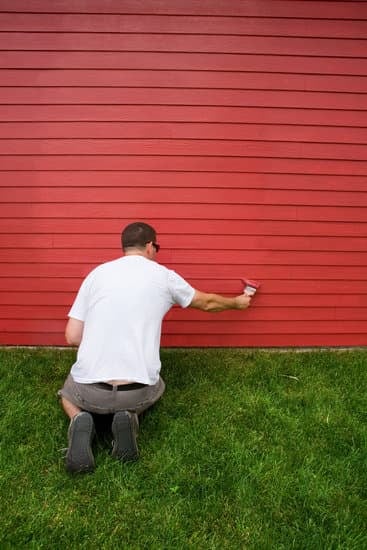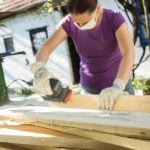What are some ways to access funds for home improvement? Whether you’re looking to renovate your kitchen, add a new bathroom, or upgrade your landscaping, finding the right funding is crucial. In this article, we will explore various options for financing your home improvement projects, from traditional methods to government assistance programs and personal loans.
Investing in home improvement is not only about enhancing the aesthetic appeal of your property; it can also increase its value. With the right upgrades and renovations, you can enjoy a more comfortable living space while potentially boosting the resale value of your home. From fixing structural issues to adding energy-efficient features, there are numerous benefits to making improvements to your property.
In the following sections, we will delve into the traditional ways of accessing funds for home improvement, such as savings or using credit cards. We will also explore government assistance programs that provide financial help for specific projects. Additionally, we’ll discuss personal loans, home equity loans, and refinancing as viable funding options for homeowners. Ultimately, by understanding these different avenues for accessing funds, you can make informed decisions about financing your home improvement projects.
Benefits of Investing in Home Improvement
Increased Property Value
One of the main benefits of investing in home improvement is the potential to increase the value of your property. By making strategic upgrades and renovations, homeowners can significantly raise the market value of their homes. This proves beneficial when it comes time to sell or refinance the property, as the increased value can result in a higher selling price or more favorable loan terms.
Enhanced Comfort and Functionality
Home improvement projects also offer the benefit of enhanced comfort and functionality for homeowners. Upgrades such as replacing old windows with energy-efficient ones, installing modern heating and cooling systems, or remodeling an outdated kitchen can greatly improve the comfort level and functionality of a home. These improvements can make everyday living more enjoyable for homeowners and their families.
Curb Appeal and Aesthetic Value
Investing in home improvement can also boost a property’s curb appeal and aesthetic value. Exterior upgrades like landscaping, new siding, or a fresh coat of paint can greatly enhance the overall look of a home. Additionally, interior renovations such as updating flooring, countertops, or fixtures can modernize the aesthetic appeal of a home. These enhancements not only make a property more visually appealing but also contribute to a greater sense of pride in homeownership.
Traditional Ways to Access Funds for Home Improvement
When it comes to funding home improvement projects, there are several traditional options that homeowners can explore. These options have been used for years and continue to be popular choices for financing renovations and upgrades. Here are some traditional ways to access funds for home improvement:
1. Savings: One of the most common ways to fund home improvements is by using personal savings. This can include money set aside specifically for these types of projects or funds that have been saved over time.
2. Credit Cards: Many homeowners use credit cards to cover the costs of home improvement projects. While this can be a convenient option, it’s important to consider the interest rates and fees associated with using credit cards for large expenses.
3. Home Improvement Loans: Some financial institutions offer specific loans designed for home improvement purposes. These loans may come with competitive interest rates and flexible repayment terms, making them an attractive option for many homeowners.
Exploring these traditional funding options can help homeowners determine the best approach for financing their home improvement projects based on their individual financial circumstances and needs. By carefully evaluating each option, homeowners can make informed decisions that will enable them to achieve their renovation goals without incurring unnecessary financial burden.
Government Assistance Programs for Home Improvement
HUD Home Improvement Programs
The U.S. Department of Housing and Urban Development (HUD) offers several programs to help homeowners improve their homes. One such program is the Title I Property Improvement Loan Program, which provides loans of up to $25,000 for home improvements. Another program, the 203(k) Rehabilitation Mortgage Insurance, allows homeowners to finance both the purchase or refinance of a house and the cost of its rehabilitation through a single mortgage.
Energy-Efficiency Grants and Rebates
Many state and local governments offer grants, rebates, or incentives for making energy-efficient upgrades to homes. These can include installing solar panels, updating HVAC systems, or improving insulation. In addition to government programs, there are also energy companies and non-profit organizations that provide financial assistance for energy-efficient home improvements.
Veterans Affairs (VA) Home Improvement Grants
For veterans with disabilities related to their military service, the VA offers grants through the Specially Adapted Housing (SAH) grant program. This grant helps eligible veterans make modifications to their homes in order to accommodate their disability-related needs. The Special Housing Adaptation (SHA) grant is another option for veterans who need assistance in adapting a family member’s home to meet their accessibility needs.
By taking advantage of these government assistance programs, homeowners can access funding specifically designed to help improve their homes, making it more affordable to undertake necessary renovations and upgrades.
Personal Loans for Home Improvement
When it comes to making improvements to your home, personal loans can be a convenient and flexible way to access funds. These types of loans are typically unsecured, meaning you don’t have to put up any collateral, such as your home or car, to qualify. This can make them an attractive option for homeowners who may not have significant equity in their homes.
One of the benefits of using a personal loan for home improvement is that the application process is usually quick and straightforward. Many lenders offer online applications, and approval decisions can often be made within a matter of days. This means you can access the funds you need in a timely manner without having to go through the lengthy process of applying for a home equity loan or refinancing.
Additionally, personal loans offer borrowers the flexibility to use the funds for a wide range of home improvement projects, from small renovations to major remodels. Whether you’re looking to upgrade your kitchen, add an extra bathroom, or invest in energy-efficient upgrades, a personal loan can provide the financial resources you need to make your home improvement dreams a reality.
Home Equity Loans and HELOCs
When considering home improvement projects, one of the most common ways to access funds is through home equity loans and Home Equity Lines of Credit (HELOCs). These options allow homeowners to tap into the equity they have built in their homes over time. Here are some important points to consider when exploring these funding options:
- Home Equity Loans: This option allows homeowners to borrow a lump sum of money using their home as collateral. The loan amount is based on the difference between the current market value of the home and the remaining balance on the mortgage.
- HELOCs: A HELOC is a line of credit that allows homeowners to borrow against the equity in their home. It operates similar to a credit card, where borrowers can access funds as needed up to a certain limit and only pay interest on the amount borrowed.
Both options offer advantages such as potentially lower interest rates compared to other types of loans, and the interest paid may be tax-deductible. However, it’s essential for homeowners to carefully consider their ability to repay these loans, as they are secured by the property.
Before deciding on either a home equity loan or a HELOC for home improvement funding, it’s crucial for homeowners to fully understand the terms, fees, and potential risks involved with these financing options. Additionally, seeking advice from financial professionals and comparing offers from different lenders can help ensure that you make an informed decision that aligns with your financial goals.
Refinancing for Home Improvement
One of the main benefits of refinancing for home improvement is the potential to save money on interest payments. If a homeowner’s current mortgage has a high-interest rate, refinancing can offer the opportunity to secure a lower rate, which can result in significant long-term savings. Additionally, by accessing the equity in their homes through refinancing, homeowners can avoid taking out high-interest personal loans or credit cards to fund their renovation projects.
It’s important to note that while refinancing for home improvement can be advantageous, it also comes with costs such as closing fees and appraisal expenses. Homeowners should carefully consider these expenses and compare them with potential savings from a lower interest rate before deciding whether refinancing is the right funding option for them.
Consulting with a financial advisor or mortgage specialist can help homeowners make an informed decision about whether refinancing is the best choice for their specific home improvement needs.
Crowdfunding for Home Improvement Projects
Crowdfunding has become a popular way to access funds for various projects, including home improvement. It involves reaching out to a broad audience and asking for small contributions from many individuals to fund a specific project. There are several crowdfunding platforms available where homeowners can create a campaign for their home improvement project and seek financial support from friends, family, and even strangers.
One benefit of using crowdfunding for home improvement projects is that it allows homeowners to gather the necessary funds without taking on additional debt. Instead of borrowing money through traditional loans or credit cards, homeowners can raise the needed funds by appealing to a wide network of potential supporters who are willing to contribute towards their project. This method also provides an opportunity to engage with the community and share the details of their home improvement plans.
However, it’s important for homeowners to carefully consider the platform they choose for crowdfunding as well as its associated fees and requirements. Some platforms may charge a percentage of the funds raised, so it’s essential to take this into account when setting a fundraising goal. Additionally, creating a compelling campaign with a detailed explanation of the home improvement project and its potential impact can increase the likelihood of receiving contributions from supporters.
| Platform | Fees |
|---|---|
| Kickstarter | 5% fee on total funds raised |
| GoFundMe | 9% + $0.30 per transaction |
| Indiegogo | 5% fee on total funds raised (plus payment processing fees) |
Tips for Choosing the Right Funding Option
When it comes to choosing the right funding option for your home improvement project, there are several factors to consider. One of the most important things to think about is the interest rates and repayment terms of each option. Traditional home improvement loans may offer lower interest rates compared to personal loans, but they may also have stricter requirements for approval.
On the other hand, personal loans may be easier to qualify for, but they typically come with higher interest rates. It’s essential to weigh the pros and cons of each funding option and choose the one that best fits your financial situation.
Another factor to consider when choosing a funding option for home improvement is the timeline for receiving the funds. If you have an urgent repair or renovation that needs to be addressed promptly, you may want to opt for a funding source with a quick approval process and fast disbursal of funds. Some options, such as personal loans or crowdfunding, can provide funds relatively quickly, while others, like government assistance programs or refinancing, may have longer processing times.
Additionally, it’s crucial to consider your long-term financial goals and how each funding option aligns with them. For example, if you’re planning on staying in your home for many years and have substantial equity built up, a home equity loan or HELOC might be a suitable choice.
However, if you’re looking for more flexibility and don’t want to put your home up as collateral, a personal loan or crowdfunding may be more appealing. Ultimately, choosing the right funding option involves carefully evaluating your current financial status, your future plans, and weighing the advantages and disadvantages of each available choice.
Conclusion
In conclusion, there are various ways to access funds for home improvement, and it’s important to explore all the options available in order to make your home improvement dreams a reality. Whether you choose traditional methods such as personal loans or government assistance programs, or more innovative approaches like crowdfunding, the key is to carefully consider your financial situation and the specific needs of your home improvement project.
Investing in home improvement not only enhances the aesthetic appeal of your property but also increases its value. It can also lead to energy savings and improved functionality, making it a worthwhile endeavor. By accessing the right funds for your project, you can create a space that reflects your personal style and meets the needs of your household.
Ultimately, the success of any home improvement project depends on smart financing choices. Take the time to research and compare different funding options before making a decision. With careful planning and the right financial resources, you can achieve the home of your dreams while adding value to your property. So, don’t let funding be a barrier – get started on those long-awaited home improvements today.
Frequently Asked Questions
Can I Borrow From My IRA for Home Improvement?
Yes, you can borrow from your IRA for home improvement, but there are certain rules and restrictions to be aware of. The IRS allows for penalty-free withdrawals up to $10,000 for first-time homebuyers, which can be used for home improvement projects.
However, it’s important to consider the potential tax implications and long-term impact on your retirement savings before making any decisions.
Are Home Improvement Loans a Good Idea?
Home improvement loans can be a good idea depending on your financial situation and the specific project you have in mind. These loans can provide the necessary funds to make improvements to your home, potentially increasing its value. However, it’s important to carefully consider the terms of the loan, interest rates, and fees involved before applying.
What Are the Options Besides Refinancing?
Besides refinancing, homeowners have options such as home equity lines of credit (HELOCs) and home equity loans to access the equity in their homes for funding home improvement projects. Another option is a personal loan, which may have higher interest rates but could provide a quicker and simpler approval process compared to other types of loans or financing options.
It’s important to carefully weigh the pros and cons of each option before deciding which one is best for your situation.

I’m thrilled to have you here as a part of the Remodeling Top community. This is where my journey as an architect and remodeling enthusiast intersects with your passion for transforming houses into dream homes.





